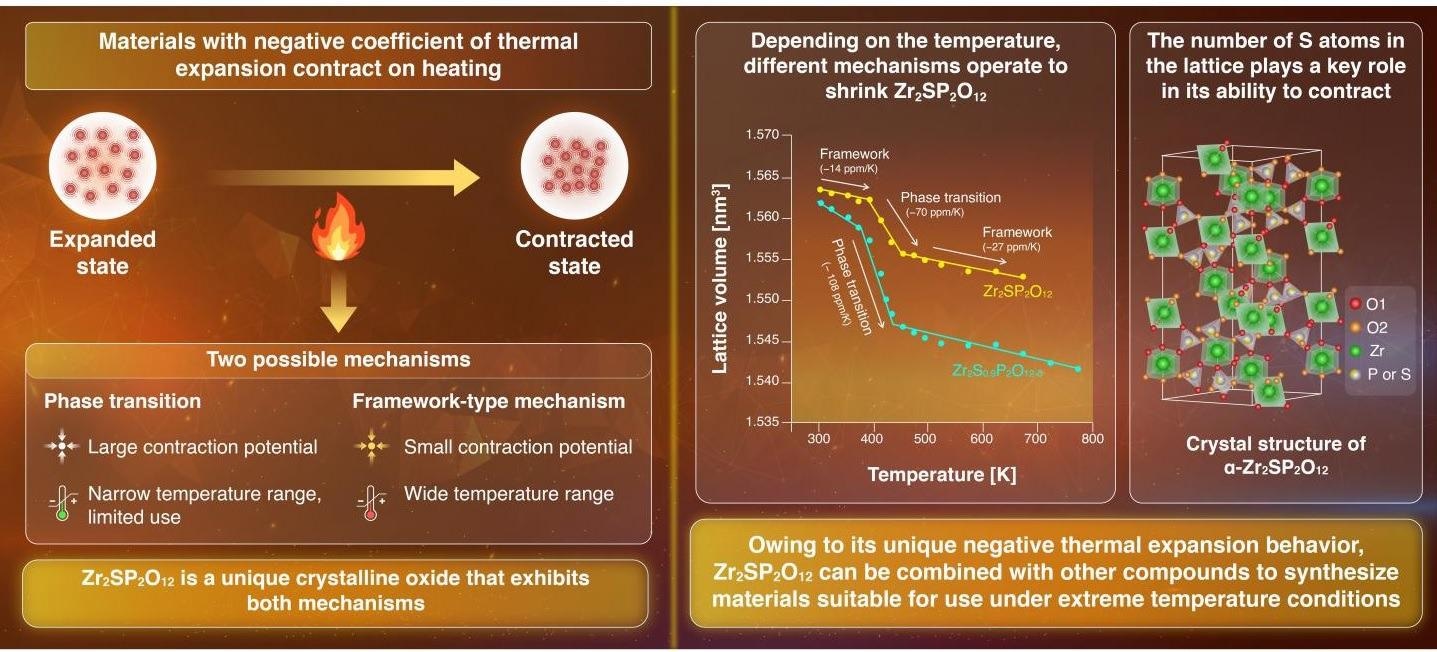Dec 21 2020
At the Tokyo Institute of Technology, researchers have recently produced an innovative material that exhibits special thermal expansion properties.

Image Credit: Toshihiro Isobe, Tokyo Institute of Technology.
The technique employed by the researchers allows the synthesis of a special crystalline oxide that contains phosphorus, sulfur and zirconium and shows two separate mechanisms of negative thermal expansion.
This material is the first one to exhibit this property and its application might help prevent damaging of composite materials, like computer chip components, which experience sudden temperature variations.
A majority of the materials have the ability to expand upon heating, as the atoms move away from one another. The expansibility of the materials when heated is quantified by making use of the coefficient of thermal expansion (CTE). Most of the existing industry-grade materials have a positive CTE, which makes their performance poor upon being subjected to more 'extreme' temperatures.
But certain materials undergo the opposite effect and contract at higher temperatures. This strange process called negative thermal expansion might help solve the issue of heat damage to composite materials.
Led by Associate Prof. Toshihiro Isobe, a research team from the Tokyo Institute of Technology has been studying materials with negative CTE.
Negative thermal expansion behavior can be primarily attributed to two types of mechanisms, phase transition and framework-type mechanism.
Toshihiro Isobe, Associate Professor, Tokyo Institute of Technology
Both these mechanisms have been used in industrial application as both have advantages and disadvantages. Phase transition-type materials exhibit huge negative CTEs but narrow usable temperature ranges, which restricts their operational use, especially as fillers in composite materials.
By contrast, framework-type materials exhibit thermal shrinkage over an extensive temperature range, but since they have small absolute CTE values, they are needed in huge quantities to realize the preferred outcome.
Over the years, researchers have been looking for an appropriate compromise between the two, but to date, they have not been able to find materials that can experience both mechanisms of negative thermal expansion.
As part of their new study, published in the NPG Asia Materials journal, Dr Isobe and his colleagues report a technique to synthesize an innovative crystalline oxide made of phosphorus, sulfur and zirconium and explain its characteristics.
The chemical formula of this crystal is Zr2SP2O12 and it is characterized by Dr Isobe as 'a negative CTE material which displays both transition- and framework-type mechanisms when heated.'
The researchers discovered that although Zr2SP2O12 shows both mechanisms of negative thermal mechanism mentioned above, one might be dominant at a specified temperature.
For example, between 393 K (approximately 120 °C) and 453 K (approximately 180 °C), the material shrunk quickly and a few of the structural units were deformed, signifying a phase transition.
But above and below this temperature range, the contraction was not as marked, and the team rather noticed small variations in the length and angle of bonds present between atoms, which is characteristic to the framework-type mechanism.
Moreover, the team observed a fascinating phenomenon. They discovered that the crystals that have fewer sulfur atoms in the lattice more easily deformed at the time of the phase transition (120°C–180 °C), leading to a huge contraction of the material (higher negative CTE). This could be useful in producing Zr2SP2O12 crystals with the preferred CTE for particular applications.
This innovative crystalline material and its synthesis mechanism could lay the basis for the synthesis of compounds with an analogous dual mechanism. With the help of this approach, material engineers would be able to choose compounds with particular properties to customize the performance of manufactured materials to particular operational conditions.
Journal Reference:
Isobe, T., et al. (2020) Negative thermal expansion in α-Zr2SP2O12 based on phase transition- and framework-type mechanisms. NPG Asia Materials. doi.org/10.1038/s41427-020-00266-9.